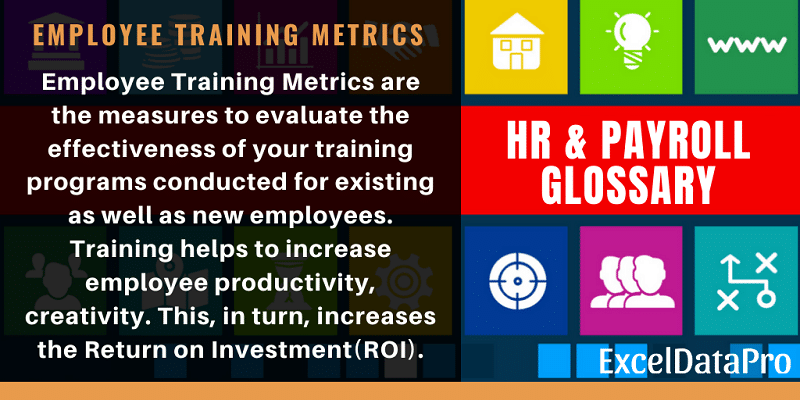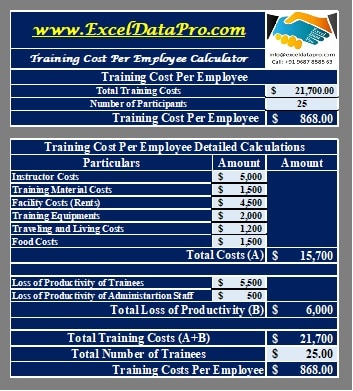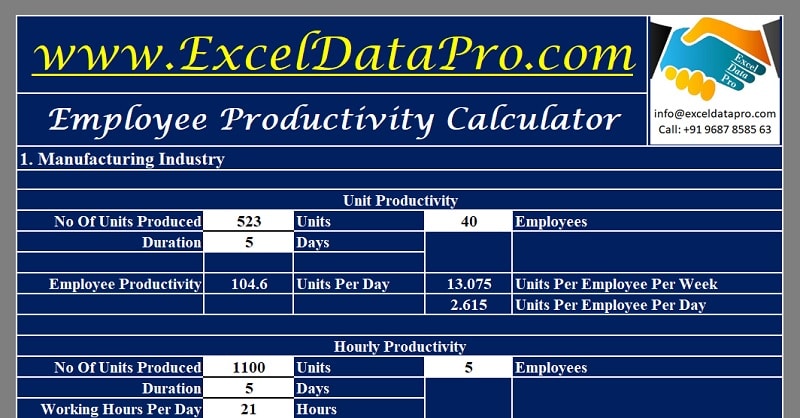
Employee Training Metrics – Definition
Employee Training Metrics are the measures to evaluate the effectiveness of your training programs conducted for existing as well as new employees.
Training helps to increase employee productivity, creativity. This, in turn, increases the Return on Investment(ROI). Unfortunately, some training programs do not give the desired results. This can lead to a negative effect on business.
Applying the metrics helps you know the effectiveness of your training programs.
6 Important Employee Training Metrics
Training Spend Rate, Training Cost Per Employee, and Average Training Hours help you know the training costs, training hours per employee and training cost spent on each employee.
To know the effectiveness of the training you need to measure Employee Productivity and New Hire Turnover Rate.
Let us understand each metrics in brief.
Training Spend Rate
Training Spend Rate is an HR metric to calculate the percentage of training costs spent against human capital costs as well as the operating costs. Usually, companies calculate this metric is annually against both costs.
It helps the management to know the effectiveness of the recruiting process and also to understand the effect of training costs on operating costs.
Click here for more information on Training Spend Rate and to download a ready-to-use Training Spend Rate Calculator in excel.

Training Cost Per Employee
Training Cost Per Employee is the money spent on each employee to provide training. It is also known as TCPE.
Generally, the total training cost divided by the number of trainees will give you the training cost per employee.
The training costs instructor costs, facility costs, equipment costs, travel costs, living costs, food costs and loss of productivity.
Click here for more information on TCPE and to download a ready-to-use Training Cost Per Employee Calculator in excel.

Average Training Hours
Average Training Hours means the total training hour divided by the total number of employees taking part in the training.
This metrics helps you know the time investment in training at an individual level. It also helps the management to review the increase in productivity against the time invested.
Click here to know more about Average Training Hours along with examples. You can also download a ready-to-use Average Training Hours Calculator in excel.

Employee Productivity
Employee Productivity is the production/revenue received during a specific period against the number of employees or resources consumed in that specific period. Productivity is measured differently depending on the industry.
You must measure this metric before and after training to know the actual effect of training. An increase or decrease in productivity after training defines how effective your training was.
Click here to know more about Employee Productivity with examples. You can also download a ready-to-use Employee Productivity Calculator in Excel.

New Hire Turnover Rate
Turnover rate means the proportion of employees leaving the company for what so ever reason. But the new hire turnover rate is when your newly recruited workforce leaves the organization.
In simple terms, it is the percentage of new employees leaving the organization against the total number of hires during a specific time.
Lower New Hire Turnover Rate indicates the effectiveness of your recruitment process. If the newly recruited staff stays with the company for longer periods then it helps you lower recruitment costs. The normal new hire turnover rate is 20%.
Usually, employees stay with a company where they see growth potential and get learning opportunities to advance their skills.
Thus, the New Hire Turnover Rate can be a means to measure the effectiveness of your training programs.
Click here to know more about New Hire Turnover along with examples. Additionally, You can download a ready-to-use New Hire Turnover Rate Calculator in excel.

We thank our readers for liking, sharing and following us on different social media platforms.
If you have any queries please share in the comment section below. We will be more than happy to assist you.
Leave a Reply